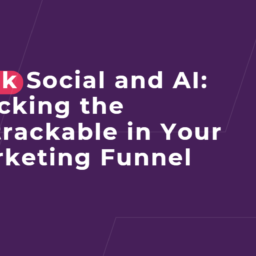In a world where attention spans have shrunk to seconds and choices are endless, traditional personalization isn’t enough. Recommending “products you may like” or using someone’s first name in an email? That’s table stakes.
What’s next is deeper, faster, and smarter.
Welcome to the era of AI-powered micro-moment targeting—where brands don’t just personalize, they predict and intercept intent in real time.
What Are Micro-Moments?
Coined by Google, micro-moments are those brief, intent-rich windows when a user wants to:
- Know something
- Go somewhere
- Do something
- Buy something
They’re the split-second decisions made while scrolling, searching, watching, or asking Alexa. And they’ve become the new battleground for attention.
Why AI Is the Missing Ingredient
Until recently, marketing tech couldn’t react fast enough to capture these fleeting moments. Manual segmentation, rule-based automations, and static user profiles simply couldn’t keep up.
Now, AI changes the game by enabling:
- Real-time behavior analysis
- Predictive intent modeling
- Instantaneous content delivery
With AI, brands can finally meet users exactly where they are—in milliseconds.
How AI Powers Micro-Moment Targeting
🧠 1. Behavior Prediction in Real Time
AI models can detect subtle signals—scroll patterns, dwell time, bounce triggers—and infer what a user is likely to do next. Is this a comparison shopper or a buyer in heat? AI knows.
📍 2. Contextual Personalization
Beyond demographics, AI understands context: time of day, device, location, weather—even emotional tone based on past behavior. This lets brands serve content that fits the moment, not just the person.
🕒 3. Trigger-Based Automation
AI can deploy personalized ads, offers, or messages the moment a user hits a micro-moment—whether it’s abandoning a cart or Googling “best running shoes for flat feet.”
🔄 4. Continuous Learning
Unlike static campaigns, AI constantly learns from outcomes. Did a push notification work? Did the user convert after an Instagram Story view? The system adapts instantly for next time.
Real-World Use Cases
- E-commerce: Deliver flash discounts just as users begin comparing prices across sites.
- Travel: Suggest personalized weekend getaways when weather forecasts turn sour.
- Finance: Offer instant loan pre-approvals when users spend time on a mortgage calculator.
- Fitness apps: Recommend the perfect workout at the exact time a user typically skips gym.
These aren’t “nice to haves”—they’re revenue drivers, made possible by micro-moment intelligence.
Tools Enabling the Shift
A wave of AI-driven platforms are making micro-moment targeting accessible:
- Segment + CustomerAI for real-time user modeling
- Meta Advantage+ for predictive ad targeting
- Twilio Engage for personalized omnichannel engagement
- Google Ads’ Smart Bidding for intent-based paid media
The stack is evolving fast—and the brands adopting early are already pulling ahead.
Final Thoughts: Be There, Be Useful, Be Fast
AI-powered micro-moment targeting isn’t just about personalization. It’s about timing + relevance + intent. It’s about creating marketing that feels less like marketing—and more like help.
In this next evolution, the winners won’t be the loudest. They’ll be the smartest. The ones who show up at the exact right time with the exact right message for the exact right reason.




